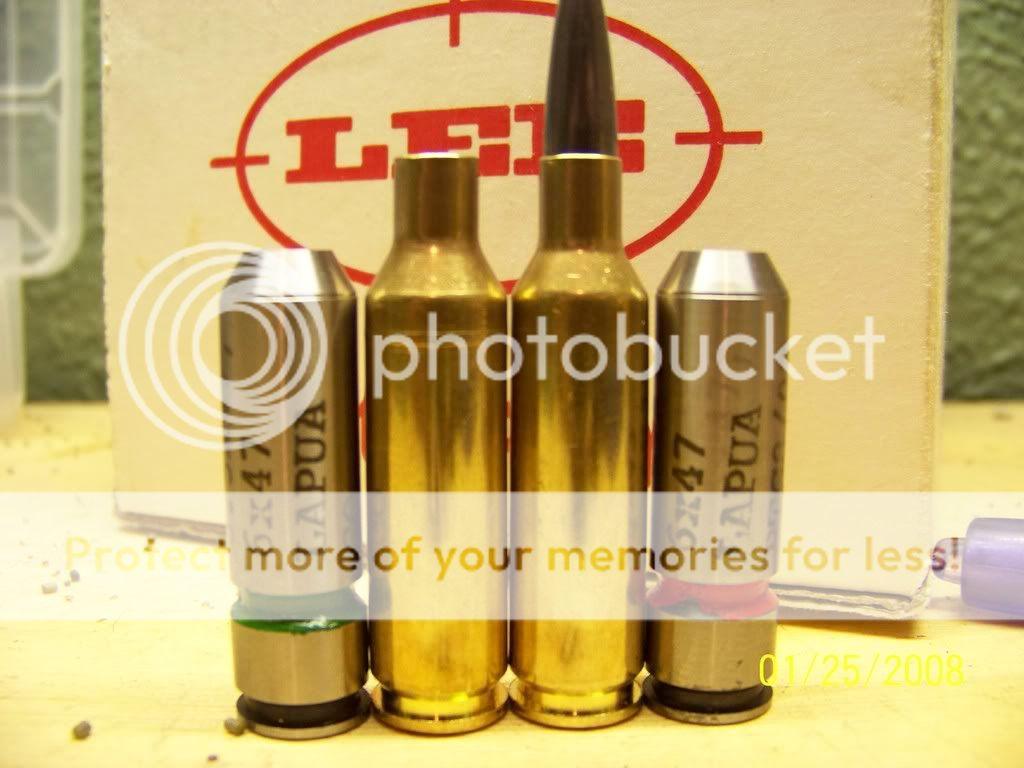strictlyRUM
Well-Known Member
Ok, I will try and see if I can get the info out in a way someone can understand. I put together a 6 lapua today. The no go dont go and the go gauge is just fine. I had sized the brass months ago with a new set of forster dies. When fired the brass shows signs of case head sepparation. Like it was reamed to deep or to much headspace. When I got home I rechecked my go no go gauges. Didnt screw up there. The neck shoulder junction on the fired brass looks to have mooved forward .010-.015 and the angle looks to have changed to a softer or less sharp angle. I measured as many measurements as I can think of on them before and after. I get them same measurements at the shoulder body juction on both. Length is almost unchanged. Body diameter is almost the same. It just looks like maybe I sized them too far when necking down to 6 from 6.5. Is it possible to push the neck shoulder junction back too far? Wouldnt the die prevent this from happening? I had a 6-284 years ago and dont remember ever having to watch for anything like that. Everything I have read about this case is resize and go. If anyone has any imput or ideas I would greatly appreciate it. The only thing I can think that is left is bad reamer or die set. I dont really know a way of checking without a cast and print. Any other measurements or ways to measure what I have to help me figure it out? Help please?

Jason

Jason
Last edited:
